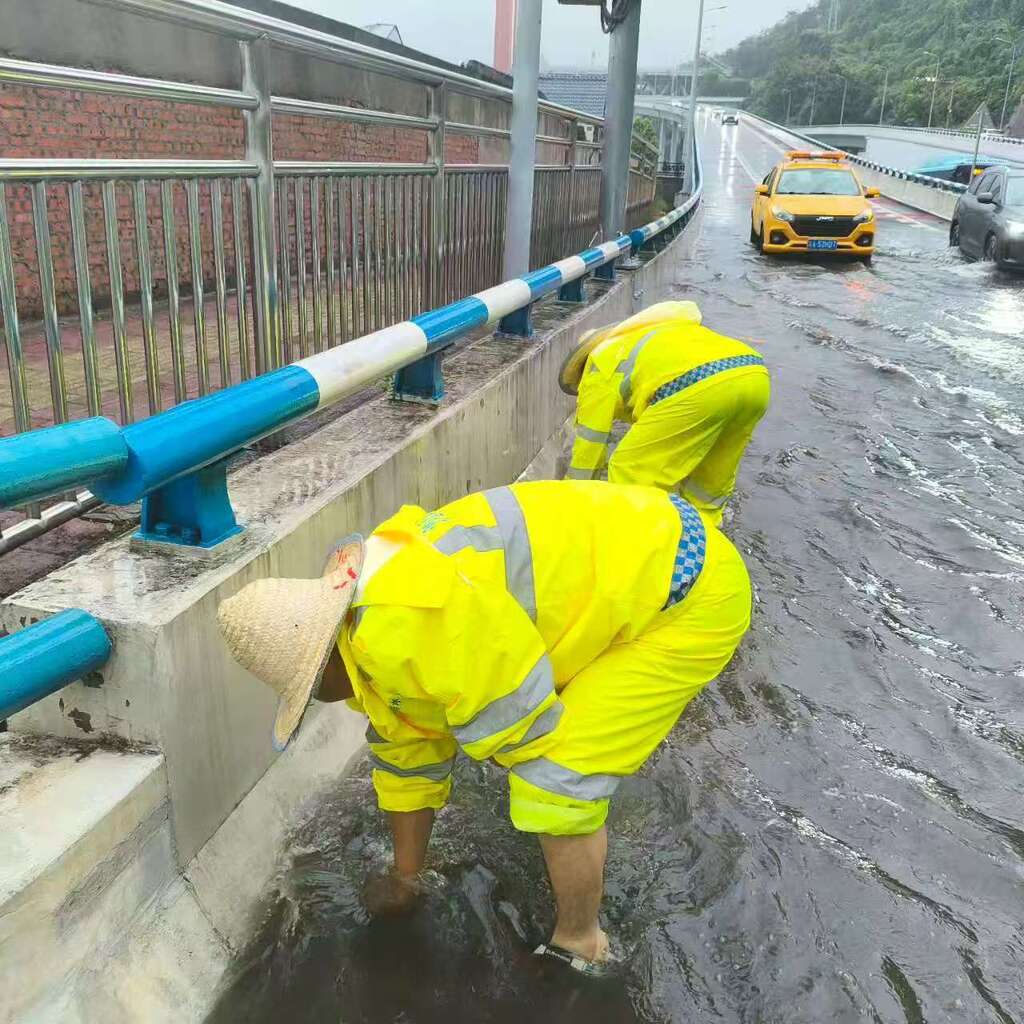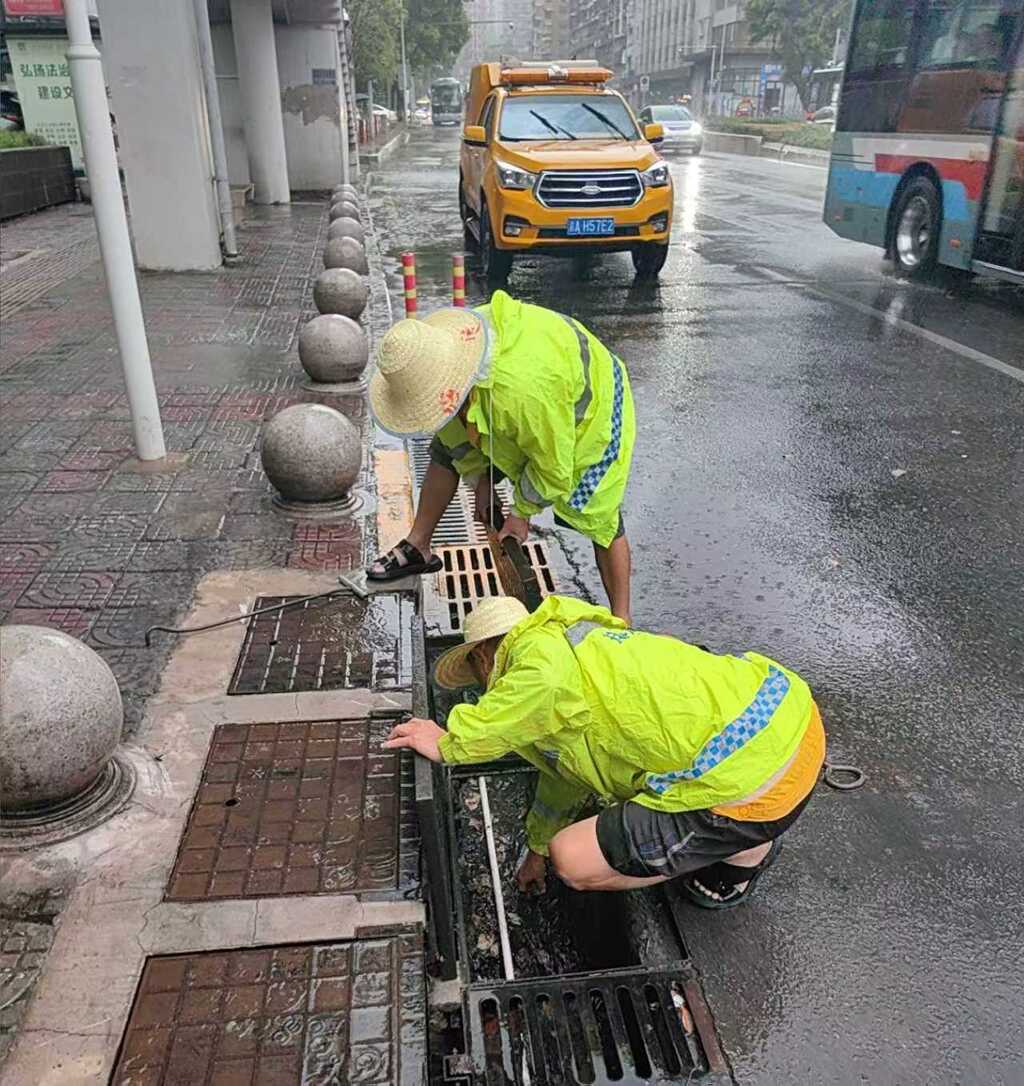According to meteorological data, from 8:00 PM on August 10 to 6:00 AM on August 11, heavy to torrential rain hit parts of western Chongqing. Twenty-seven rainfall stations in nine districts recorded torrential rain, while 165 stations in 11 districts reported heavy rain. The maximum rainfall reached 148.9 mm, with peak hourly rainfall of 94.8 mm.
The Chongqing Housing and Urban-Rural Development Commission acted swiftly, leveraging a digital flood prevention system to deploy personnel and equipment precisely. High-risk waterlogging points were addressed with tailored strategies, and drainage teams across districts worked on the front lines to ensure urban safety.
Proactive Measures for Prevention
On August 10, the commission held an emergency meeting, upgrading the flood response level in key districts from the existing Level III. Ten task forces were dispatched to 27 critical districts, including Wanzhou, Jiangjin, Hechuan, Qianjiang, Dianjiang, and Fengjie, focusing on urban waterlogging, construction sites, and residential buildings.
Before the storm, the commission mobilized 3,368 personnel, 854 vehicles, and 700 drainage units with a capacity of 59,837 cubic meters per hour. Over 2,435 km of drainage pipelines were inspected, and more than 2,100 storm drains were cleared.
At around 10:00 AM, drainage workers in Jiangbei District cleaned storm drains and reinforced flood barriers near the Chongqing Dengkang Company. In Yubei District, caution tape was set up near the New Chaoli Bearing Company, a known flood-prone area. In Beibei District, workers cleared blockages from drains near Jinyun Kindergarten to ensure smooth drainage.
The commission also issued special directives for this round of heavy rain, urging districts to strengthen accountability, enhance preparedness, and coordinate inspections of subways, underground malls, and parking garages. Post-rain recovery efforts were also emphasized.
Braving the Storm to Ensure Safety
As the rain poured, Chongqing’s drainage teams worked tirelessly to protect the city.
At 7:00 AM on August 11, workers in Jiulongpo District cleared drains near Yangguang Xinyue Community to ensure smooth traffic during rush hour. The district deployed seven emergency vehicles, three drainage units, and 45 personnel to handle the situation.
By 8:00 AM, water had pooled under the Hongyan Village Bridge in Shapingba District. Responders arrived quickly to clear debris from storm drains, improving water flow and ensuring road safety.
By 8:30 AM, the flooding was under control. Shapingba District continued monitoring flood-prone areas for rapid response.

In Zhong County, teams conducted thorough inspections of flood-prone areas, clearing drains and pre-positioning equipment. From August 10 to 11, they deployed four vehicles, five drainage units, and 42 personnel, preventing flooding in eight key locations.
Kaizhou District inspected 36 km of drainage pipes, addressed five risks, cleared 54 storm drains and 11 inspection wells, and repaired one pump station. Twenty-six workers and two specialized vehicles were deployed, ensuring no property damage or casualties.
By now, all 12 flood points in Chongqing have been resolved without disrupting city operations. The commission continues to monitor rainfall and flood risks.
Digital Solutions for Flood Control
Beyond manual efforts, an “invisible guardian” aids in combating urban waterlogging.
The digital flood management system, launched last year, addresses issues like inaccurate risk warnings and delayed responses. Using real-time weather data, it provides tiered alerts across city, district, and street levels.
Chongqing Dengkang Company
(Note: If you meant a different site, such as a cultural landmark in Chongqing, please clarify, and I’d be happy to provide a more relevant summary!)


